The History of Irish Lace in Folklore: Unveiling Its Cultural Significance
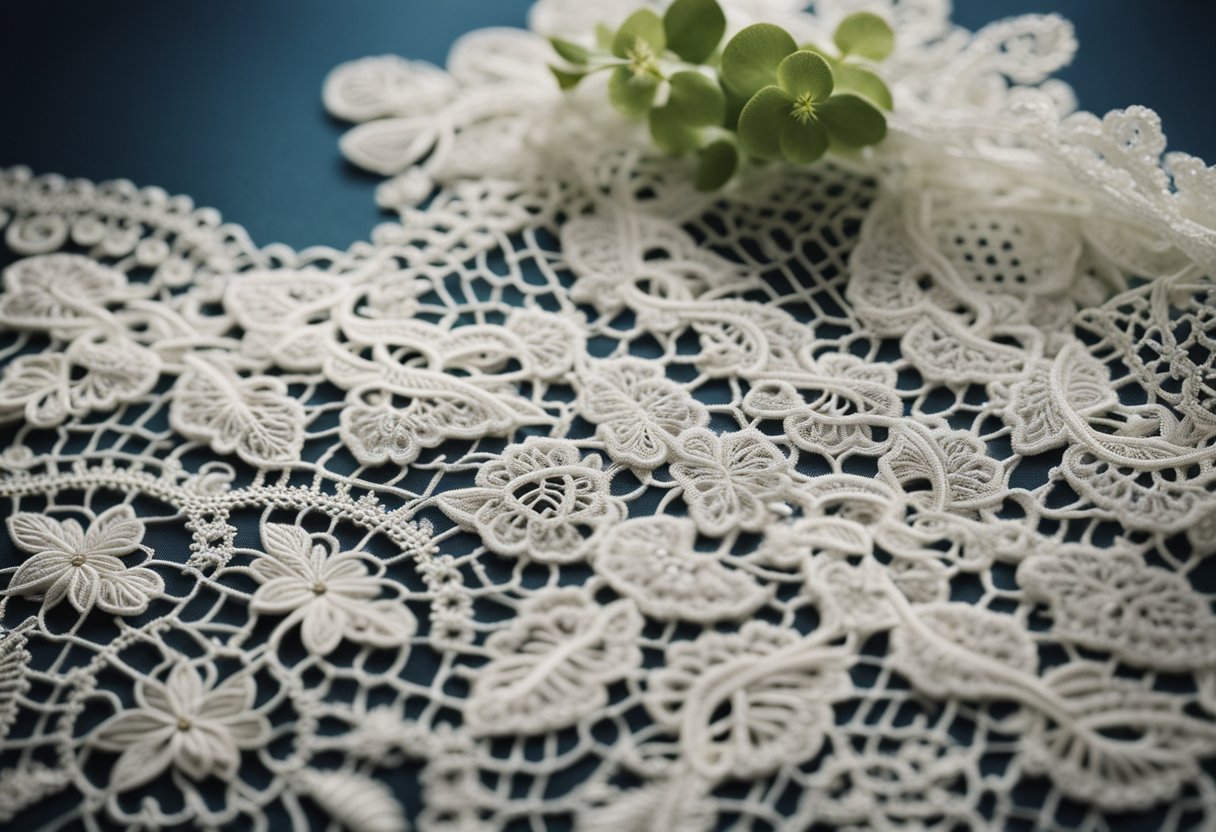
Updated On: April 24, 2024 by Maha Yassin
Irish lace intertwines the threads of Ireland’s rich heritage with its compelling folklore, symbolising beauty and resilience. Originating amidst the hardships of the 19th century, Irish lace was more than a decorative fabric; it served as a lifeline for many Irish families during times of famine and economic strife. This intricate craft contributed to Ireland’s national identity, carrying tales of Irish folklore and weaving mythical figures and stories into its designs. The delicate patterns often reflect cultural and spiritual beliefs, showcasing Ireland’s profound connection to its folklore traditions.
The art of lacemaking, particularly Irish crochet, was passed down orally through generations, securing its place in the fabric of Irish culture. Irish lace patterns often draw inspiration from Ireland’s natural landscape, echoing the shapes of its flora and embodying the country’s spiritual life. As Irish lace gained prominence in fashion and formal attire, it symbolised a nation’s cultural prestige and creativity. It subsequently became a treasured craft celebrated by institutions and preserved for its historical significance and enduring beauty.
Origins of Irish Lace
Irish lace is a celebrated craft, deeply rooted in our nation’s history, flourishing during periods of hardship and becoming a symbol of both beauty and resilience. Its intricate patterns distinguish it and have become synonymous with Irish cultural heritage.
Influence of French Lace on Irish Design
The origins of Irish lace can be traced back to the 19th century when French lace heavily influenced Irish design. Around this time, France’s elaborate needlepoint lace, known for its exquisite detail and fine workmanship, inspired our local artisans. Our adaptation involved intricate designs that often mimicked nature, incorporating elements such as flowers and leaves, capturing the organic beauty of the Irish countryside.
Cork and Limerick Lace Beginnings
Two specific types of Irish lace, Cork and Limerick lace, have their unique beginnings. Cork lace centres around needlepoint and boasts a strong yet delicate quality. It emerged as a distinctive form in the 1800s, reflecting the region’s creativity and skill. Meanwhile, Limerick lace, often characterised by its delicate netting and embroidered patterns, became revered across Ireland and internationally. This lace type diversified our national lace identity, allowing different regions to contribute their perspectives and techniques.
Creating these laces demonstrates our crafters’ ability to produce works of art and speaks to our country’s resilience during the economic struggle. By turning to lace-making, our ancestors found a way to support themselves while building a legacy of artisanal excellence that continues to be celebrated worldwide.
Irish Lace and National Identity
Irish lace is a testament to the nation’s artistic craftsmanship and an emblem of Ireland’s cultural identity and perseverance. It serves as a tangible connection to Irish heritage, reflecting the enduring spirit of the nation throughout history.
Role in Preserving Irish Culture
Irish lace is intricately woven into the fabric of our national identity. Historically, during economic hardship, it provided a sustainable source of income for the impoverished, supporting the local economy and preserving our rich traditions. Today, it remains a key aspect of cultural preservation, resonating with the values of Irish identity, and is celebrated in folklore and traditional Irish narratives.
Irish Lace as a Symbol of Resilience
Over the years, Irish lace has emerged as a symbol of resilience, reflecting our capacity to endure and adapt to adversity. Its metamorphosis from a mere craft into a staple of national identity underscores the Irish propensity for transformation, ultimately weaving a story of survival and adaptability into the threads of our national folklore.
Folklore and Mythology in Lace Patterns
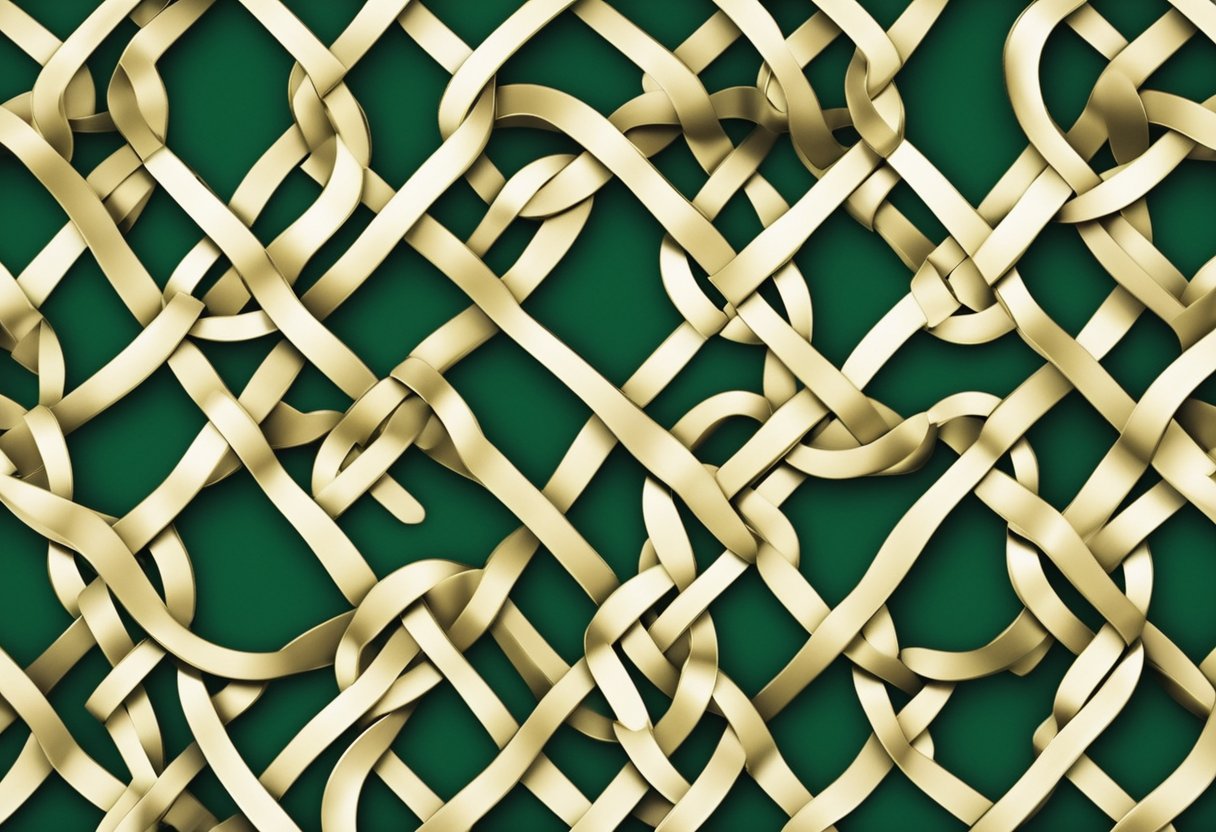
Every knot and loop captures a story in the delicate weave of Irish lace, melding ancient folklore and mythology into intricate patterns that carry the essence of Ireland’s cultural history.
Incorporation of Mythical Symbols
Mythical symbols are often interwoven into the fabric of Irish lace designs, each rich with meaning and tradition. We find patterns frequently take inspiration from Irish mythology, with many designs featuring iconic symbols, such as the Celtic knot, representing the eternal cycle of life and the interconnectedness of all things. Motifs depicting the Tree of Life or Spirals, drawn from ancient Celtic art, imbue the lace with a sense of continuity and spiritual growth, mirroring the tales of Irish myth where such motifs have prominent positions.
Fairytales and Lace Designs
Irish folklore is replete with tales of fairies, leprechauns, and the haunting wail of the banshee. Lace designs reflect these narratives, often capturing the whimsy and mischief found in fairytale depictions. For instance, a delicate lace pattern that includes a subtle fairy wing or an elfish motif can instantly evoke the mystical realm of the Sidhe, the fairy folk said to inhabit the Emerald Isle. Leprechauns, known for their craftiness, are also subtly represented in patterns, perhaps as a nod to their legendary shoemaking skills, which parallel the meticulous craftsmanship of lace-making.
The Art of Lacemaking
Ireland’s intricate art of lacemaking has a storied tradition, combining skilful techniques with various styles. We focus on unveiling the history and craft behind this cherished art form.
Techniques and Styles of Irish Lacemaking
Irish lacemaking encompasses a diverse range of techniques and styles, each with its unique characteristics. The most notable are the Youghal, Kenmare, and Carrickmacross laces, which feature delicate patterns and meticulous craftsmanship. The designs often include intricate florals and geometrical patterns, skilfully stitched to create a lightweight, airy, beautiful, and durable fabric.
Needlepoint and Crochet
Needlepoint lace, including the famed Limerick and Carrickmacross laces, is made using a needle and thread to create intricate patterns on a delicate fabric. On the other hand, Crochet employs a crochet hook to interlock loops of thread, with Irish Crochet being renowned for its ornate flowers and leaves, closely resembling Venetian needle lace. Both techniques require a high level of finesse and patience, with needlepoint being particularly labor-intensive due to its detailed and precise stitches.
Evolution and Diversification
Over time, Irish lacemaking has evolved, diversifying into various forms and adapting to the changing trends and needs of fashion. The art of lacemaking provided an aesthetic contribution and was a vital economic resource, especially during times of hardship like the Great Famine. Today, while machines can replicate lace patterns, the prestige of handmade Irish lace remains unchallenged, with its intricate work and historical significance making it highly valued in fashion and folklore.
Historically crafted by some of the poorest women in Ireland, Irish lace played a significant role in local economies and was a vital source of income. Its popularity reached the wealthiest women across Europe, featuring prominently in luxurious garments such as wedding dresses and christening robes. The craft’s ingenuity helped sustain many families, illustrating the immense importance and resilience of the lacemaking tradition.
Cultural and Oral Traditions

In the rich tapestry of Irish folklore, lace is not merely a craft but also a medium of cultural expression, intertwining myth and material. Stories of Irish heritage are woven through intricate patterns and fine threads, revealing a history steeped in oral tradition and artistic craftsmanship.
Lace and Storytelling
Lace-making in Ireland was often a communal activity where the rhythmic clicking of bobbins served as a backdrop to the art of storytelling. As women crafted delicate lace pieces, they exchanged tales and legends that had been passed down through generations, effectively preserving oral traditions. These narratives commonly featured themes of love, loss, and the ethereal beauty of Ireland, much like the lace they created. The designs, often named and inspired by local stories or landmarks, thus became a form of visual storytelling.
Music and Dance Influences
Irish lace’s patterns also echo the country’s rich music and dance tradition. The same skills and attentiveness required in lace-making are paralleled in the precise and intricate steps of traditional Irish dances. Ceilighs and music sessions, where communities gathered to share tunes and steps, were also spaces where lace patterns found new inspiration. Thus, our lace craft bears the marks of both the fluidity of Irish dance and the lyrical emotion of folk music certifying that, much like our melodies and movements, lace is a creation borne of Ireland’s soul.
Historical Significance
Irish lace is prominent in the fabric of Ireland’s cultural history, intricately woven into the nation’s narrative of resilience and adaptability during times of hardship and colonisation.
The Great Famine
During the Great Famine of the mid-19th century, traditional occupations dwindled and many Irish faced severe poverty. Lace-making emerged as a vital economic lifeline. Women and girls across the country turned to the meticulous craft of creating Irish lace to contribute financially to their struggling households. This art form not only provided much-needed income during an era of mass starvation and emigration but also became a symbol of Ireland’s endurance in the face of hardship.
Irish Lace in the Context of Colonisation
In Ireland, which was deeply affected by British colonisation, Irish lace took on a role beyond its economic importance. As a craft handed down from generation to generation, lace-making became embedded in the broader struggle for Irish identity against the forces of assimilation. Each stitch and pattern told a story of cultural preservation. Post-famine lace helped to perpetuate Irish heritage worldwide as those who emigrated carried these unique designs with them, adding an international dimension to the craft influenced by Ireland’s colonial experience.
Social and Economic Impact
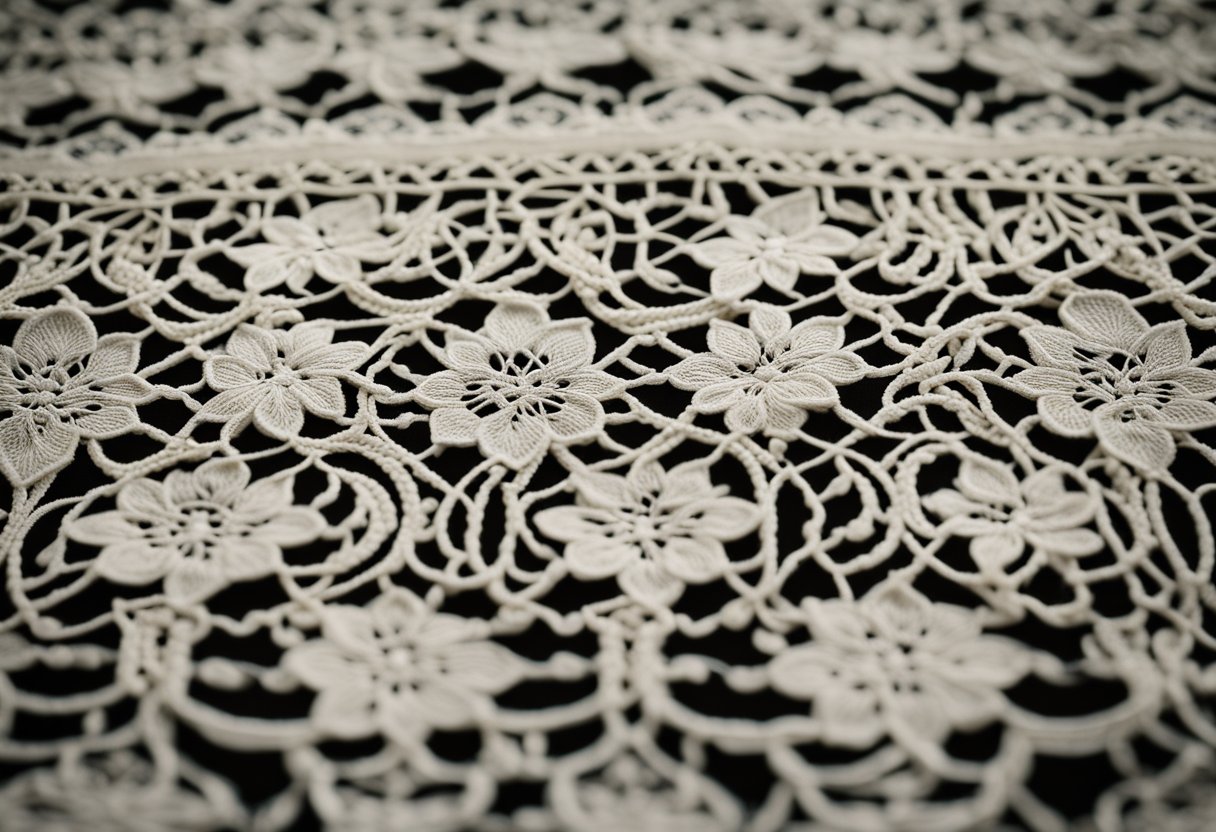
The intricate art of Irish lace has a storied past that intertwines with the fabric of Ireland’s socio-economic landscape. We will explore its formation as a cottage industry and its significant role in women’s lives.
Cottage Industry
Irish lace-making burgeoned as a cottage industry in the 18th century, significantly impacting local economies. In a time when Ireland faced economic adversity, the craftsmanship and resilience inherent in lace-making techniques offered sustenance to numerous households. This industry was widespread across rural Ireland, where families produced intricate lace designs from their homes.
- Locations: Notable centres included towns like Limerick, Carrickmacross, and Youghal.
Role in Women’s Lives
For women, especially, Irish lace-making was a valuable skill that brought financial independence and a sense of community. Their involvement spanned beyond mere production; women were custodians of centuries-old patterns and techniques, ensuring the craft’s transmission to future generations.
- Economic empowerment: Provided a source of income.
- Social Standing: Elevated the role of women within their communities.
Through Irish Lace Making History: Unravelling the Threads of a Time-Honoured Craft, we gain insights into how this delicate textile held economic value and became a cherished element of Ireland’s cultural tapestry.
Spiritual and Superstitious Beliefs
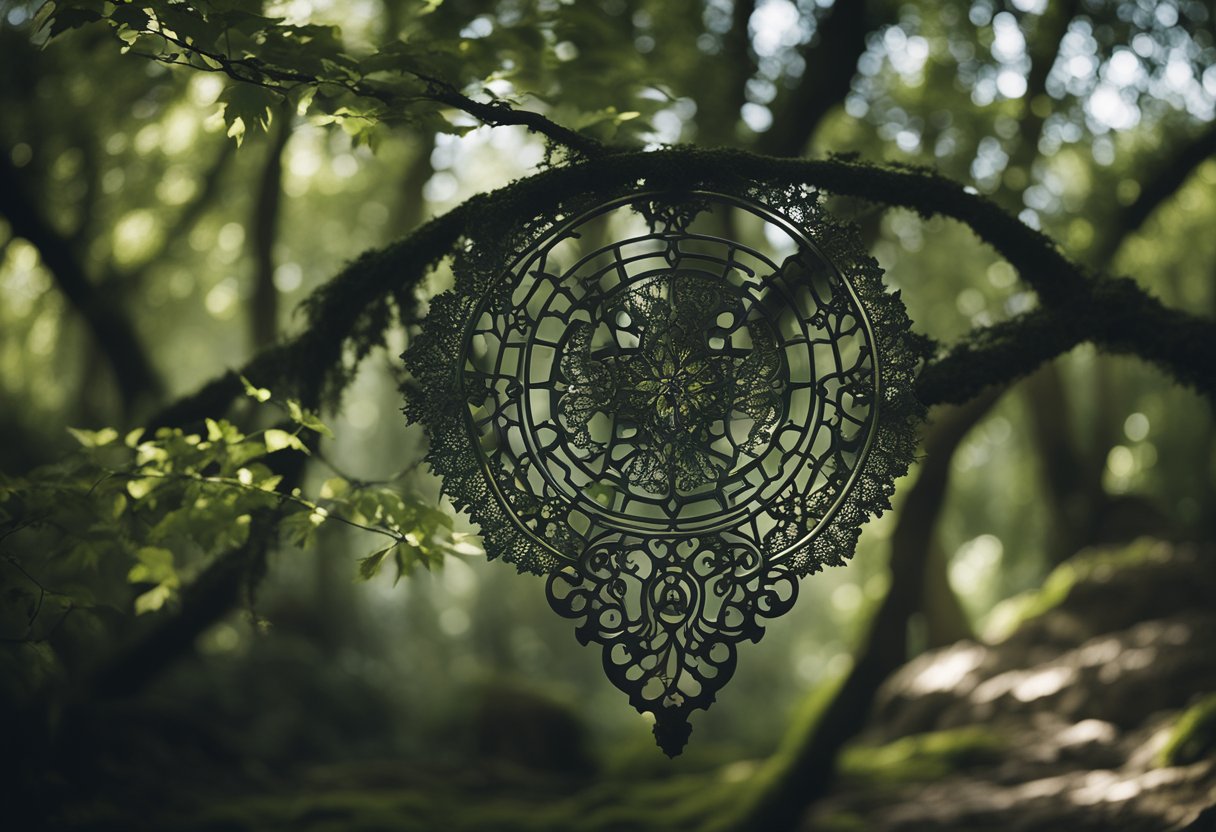
In the tapestry of Irish folklore, lace-making holds a special place, intertwining the spiritual and the superstitious. Our look into this topic reveals the delicate balance between devotional practices and the mystical symbolism often encoded within the patterns.
Lace and Religious Practices
Lace has a storied history within Christianity; it has been used to adorn altars, vestments, and church linens, signifying purity and devotion. The intricate detail in Irish lace especially captures a spiritual dedication, with craftsmen and women often reciting prayers as they wove their delicate threads. This act further infused their work with a layer of sanctity, as if each knot and loop were a physical manifestation of their beliefs.
Superstitions and Folk Motifs
The motifs within Irish lace frequently reference the otherworld, with patterns inspired by natural elements believed to be imbued with spiritual beliefs and powers. For instance, the tree of life motif, common in Irish lace, signifies the connection between heaven and earth, while other designs might proffer protection against ill will or misfortune. These superstitions contribute to the narrative that lace serves an aesthetic purpose and a talismanic one, guarding the wearer against unseen forces.
Irish Lace in Fashion and Formal Attire
As connoisseurs of all things elegant, we have observed that Irish lace has long been synonymous with luxury and sophistication in fashion, particularly in formal attire and weddings.
Lace in Weddings
In the realm of weddings, the intricate patterns of Irish lace have adorned wedding dresses for centuries, infusing them with an air of romance and heritage. A bridal gown embellished with handmade Irish lace is more than just a garment; it represents a timeless connection to craftsmanship and tradition. This sumptuous textile has been a signature feature for wedding dresses, veils, and accessories, transforming them into treasured heirlooms.
High Fashion and Aristocracy
Irish lace’s role in high fashion has been equally illustrious. The European aristocracy, often seen as trendsetters in the fashion world, has historically favoured garments accented with Irish lace. It brought an element of prestige and stateliness to their formal apparel, signifying their status and taste. The continued use of this delicate material within high fashion serves as a testament to its enduring appeal and versatility, illustrating how traditional craftsmanship can be continually reinvented within modern contexts.
For further reading on the modern incorporation of Irish lace in fashion, a visit to Connolly Cove offers a deeper dive into this sumptuous fabric’s fascinating journey through time.
Institutions and Collections
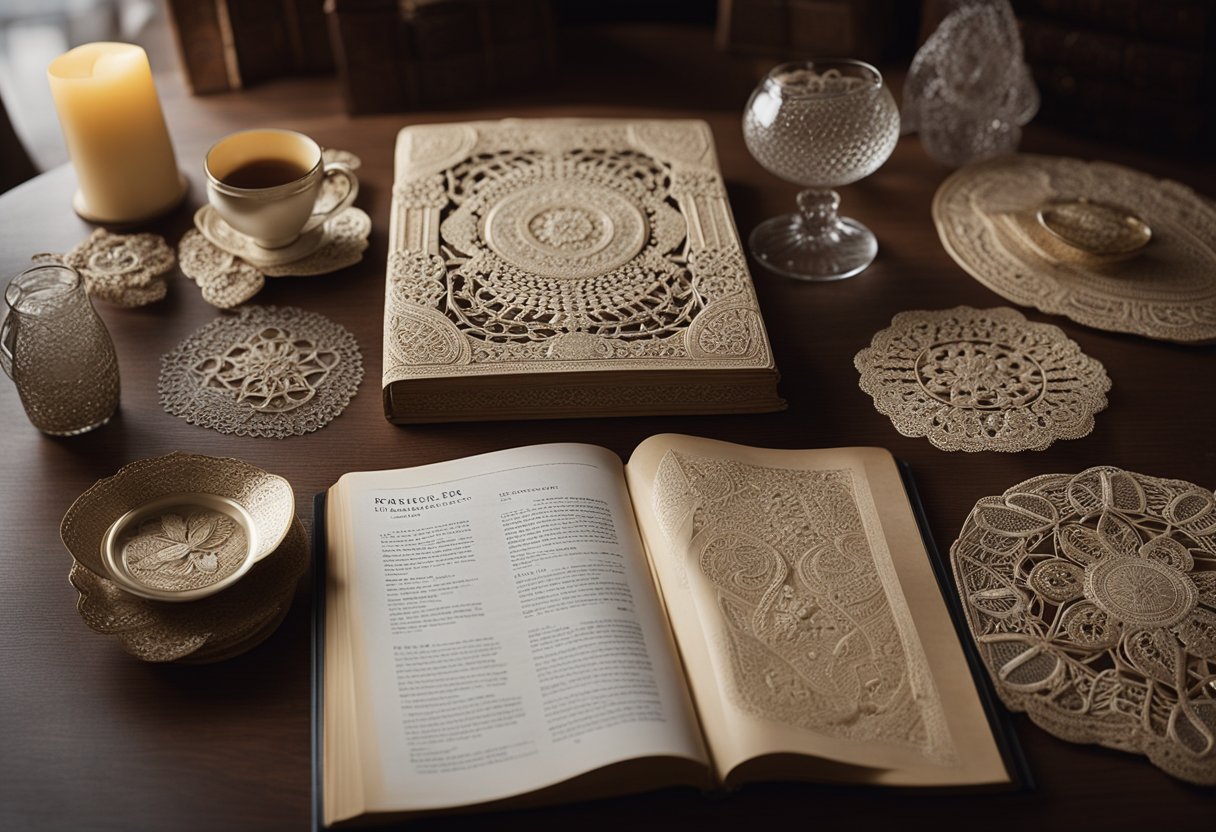
We understand the importance of preserving the rich heritage of Irish lace, a fine craft deeply intertwined with Irish history and culture. Our exploration into this delicate art form is supported by various museums and archives, along with lace-making centres and convents, which have played pivotal roles in its preservation and dissemination.
Museums and Archives
Museums serve as custodians of Irish lace, housing extensive collections that chart the evolution of this intricate textile art. The Sheelin Lace Museum, located in County Fermanagh, is dedicated to Irish lace and its history, showcasing an impressive array of lace items, including christening gowns and wedding dresses. On the other hand, the Limerick Museum holds collections of Limerick lace, known for its distinctive and ornate style.
In these archives, delicate pieces of Irish lace are meticulously preserved, providing insight into their times’ social and economic contexts. Visitors can view samples of bobbin lace, needlepoint lace, and crochet lace, each telling its own story of the region and the skilled hands that crafted it.
Lace-Making Centres and Convents
Convents have long been associated with the teaching and producing Irish lace, acting as centres of excellence where the craft was perfected and passed on to new generations. In these lace-making centres, nuns educated women in the art, helping them achieve economic independence through skill.
Many of these centres evolved around religious institutions, turning towns into renowned hubs for lace-making. These centres represent historical accounts and are a testament to the living tradition of lace-making, which continues to this day, preserving the legacy and ensuring the skills are not lost to time.
Our shared endeavour allows us to connect with Ireland’s cultural fabric, weaving together past and present stories in the delicate threads of Irish lace.
Preservation and Legacy

The intricate art of Irish lace, embodying tales like those of the Children of Lir and the eerie banshees of folklore, is a testament to Ireland’s rich cultural tapestry. We safeguard these legends through the delicate patterns woven into Carrickmacross lace, Kenmare lace, and Youghal lace, each strand preserving our cultural heritage for future generations.
- Cultural Preservation:
- Carrickmacross Lace: A handcrafted tradition that integrates timeless designs mirroring the past.
- Kenmare Lace: Continue the legacy through local initiatives to ensure this fine art flourishes.
- Youghal Lace: Demonstrating resilience and revival, in touch with the thriving spirit of Irish culture.
Our commitment to maintaining these crafts is pivotal. Workshops and exhibits abound, where these heirlooms link the past to the present. Our stories live on by curating collections and teaching the skills necessary to create such finery.
- Educational Programmes: We conduct and support courses to teach the precise methods that produce these laces, passing on wisdom that might otherwise disappear.
Our cultural identity remains entwined with these laces, just as the myths of old are stitched into the fabric of our nation. Through diligent preservation and passionate advocacy, we honour our ancestors’ artistry and provide a nurturing ground for this legacy to continue to enchant and educate. Through our hands, the threads of Irish folklore and craftsmanship will remain a vibrant part of our cultural expression.
Frequently Asked Questions
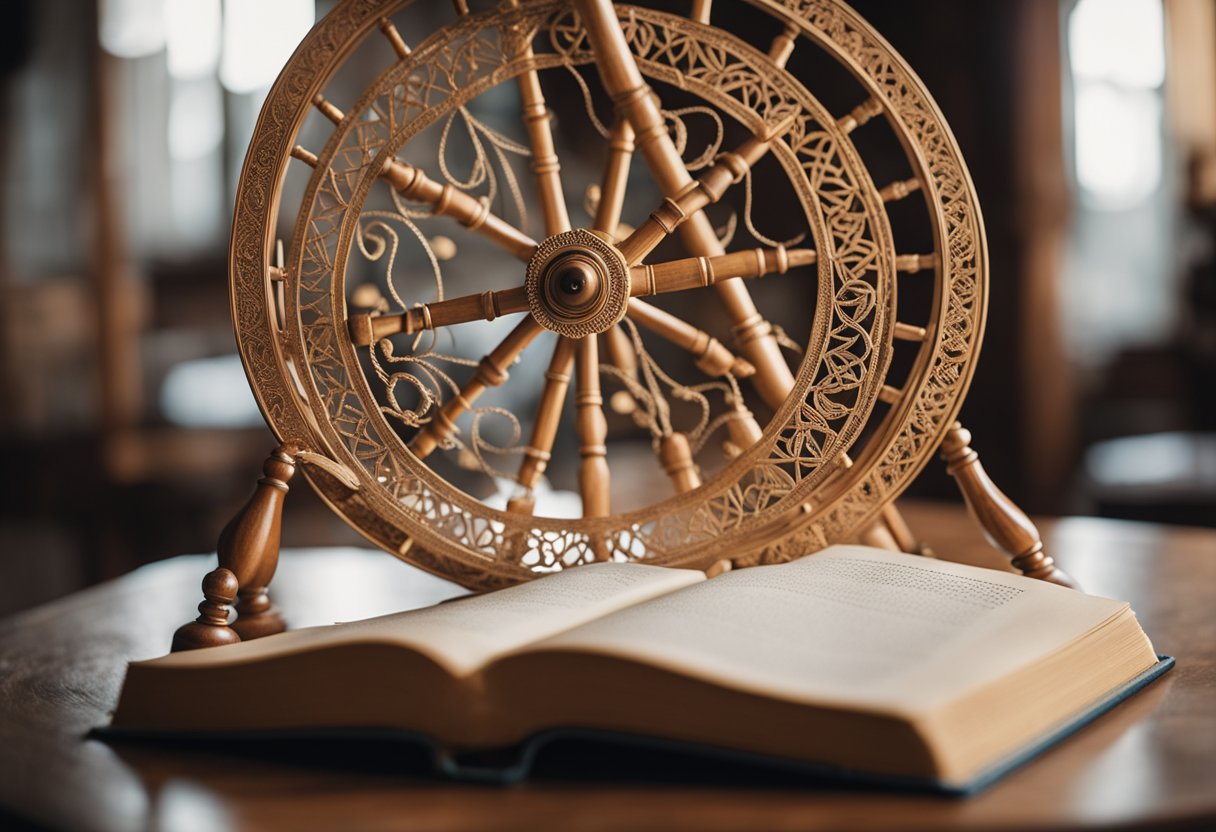
This section will address common inquiries about the Irish lace and its storied presence in folklore and tradition.
What is the origin and cultural significance of Irish lace within local folklore?
Irish lace originated during the potato famine of the mid-1800s, becoming a symbol of cultural resilience. Its cultural significance lies in the craft’s ability to provide economic sustenance whilst also reflecting the hardships and creativity of the Irish people.
How did Irish crochet lace evolve during the early stages of its history?
The evolution of Irish crochet lace was marked by its adaptation as a cottage industry. Women developed unique techniques, combining individual motifs with intricate netting to create a distinct form of delicate and durable lace.
For what purposes was Irish lace traditionally utilised in society?
Traditionally, Irish lace was utilised for special occasions, illustrating the finesse and status of its wearers. It adorned wedding dresses, christening gowns, and church linens, representing luxury and skilled artisanship.
Can you trace the historical development of Limerick lace and its place in Irish heritage?
Limerick lace, a type of Irish lace, developed in the early 19th century in Limerick, forming a key part of Ireland’s lace history. It is characterised by its ornate patterns and use in both local fashion and international markets.
What role did Irish lace play in Ireland’s economy and daily life during the 19th century?
During the 19th century, Irish lace played a significant economic role by providing a source of income for many Irish families during times of poverty. It became integral to daily life, with women teaching and spreading the skill throughout rural communities.
How are the motifs found in Irish lace intertwined with Irish cultural narratives and symbols?
The motifs found in Irish lace are deeply intertwined with Irish cultural narratives and symbols, featuring designs inspired by natural elements and local folklore, which connect the craft to Ireland’s historical and cultural identity.






